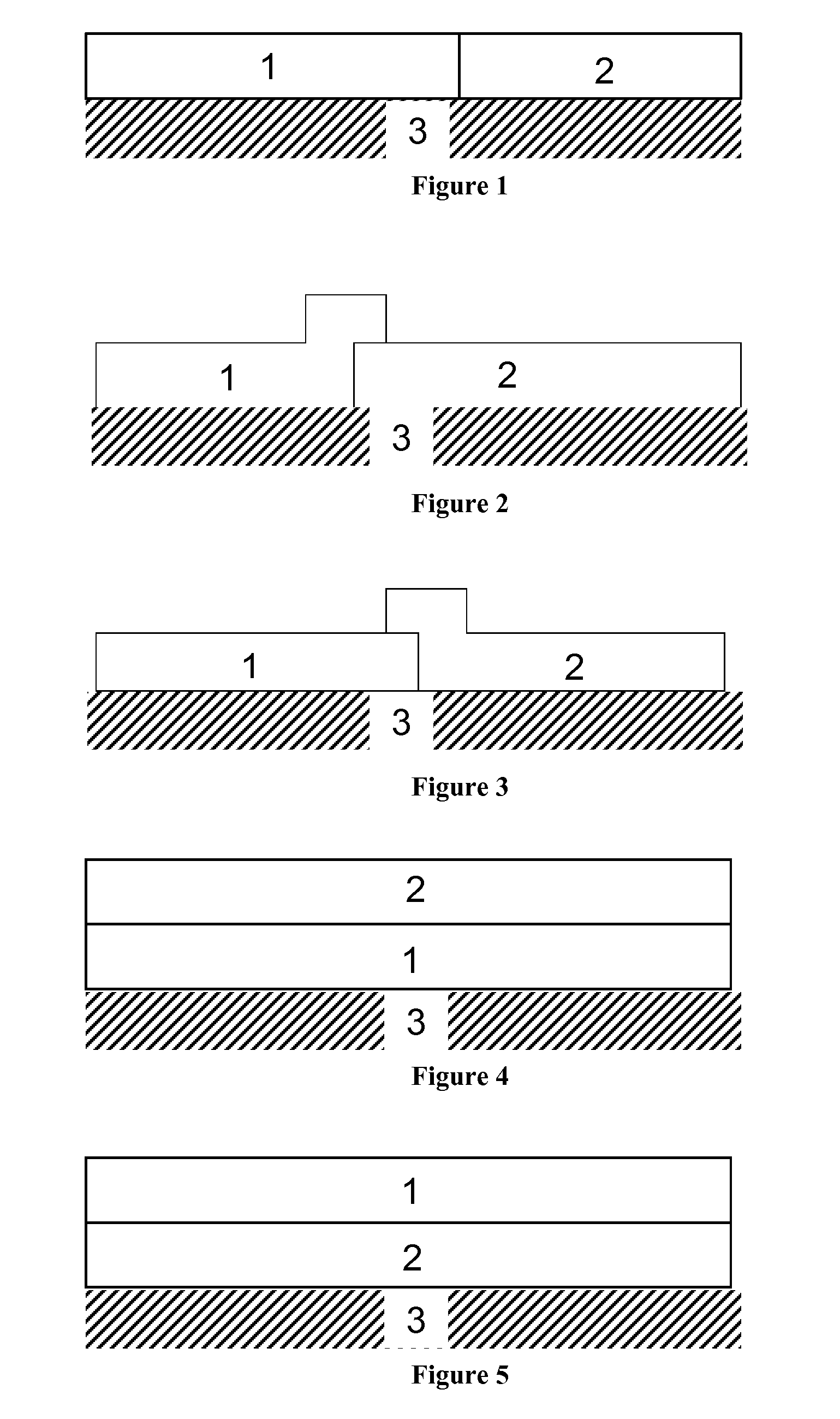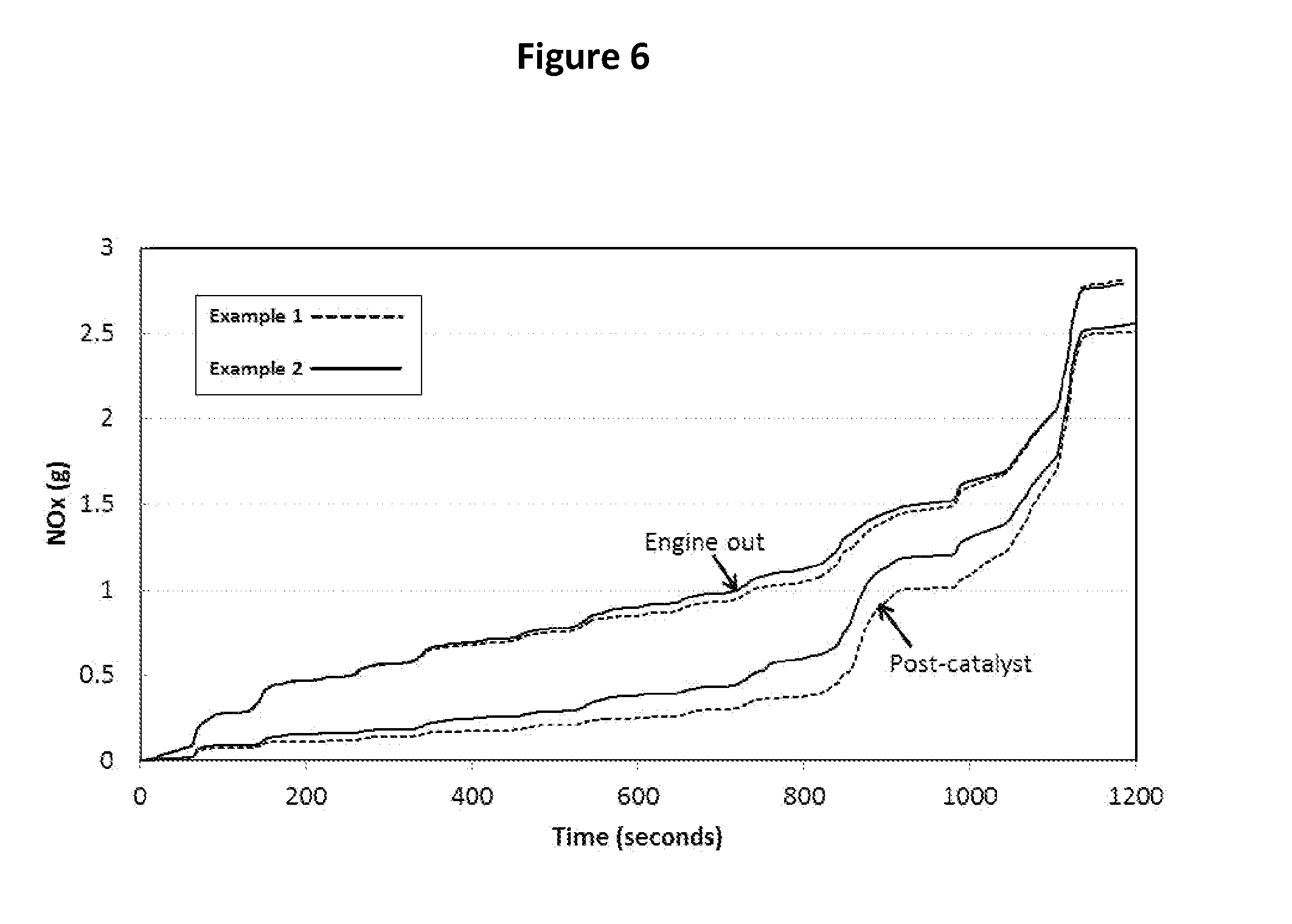DIESEL OXIDATION CATALYST WITH NOx ADSORBER ACTIVITY
a technology of nox adsorber and oxidation catalyst, which is applied in the direction of metal/metal-oxide/metal-hydroxide catalyst, machine/engine, arsenic compound, etc., can solve the problem that the oxidation activity of catalysts or devices can be relatively inefficient under the effective operating temperature, and achieve good oxidation activity
- Summary
- Abstract
- Description
- Claims
- Application Information
AI Technical Summary
Benefits of technology
Problems solved by technology
Method used
Image
Examples
example 1
[0278]Pd nitrate was added to slurry of small pore zeolite with CHA structure and was stirred. The slurry was applied to a cordierite flow through monolith having 400 cells per square inch structure using established coating techniques. The coating was dried and calcined at 500° C. A coating containing a Pd-exchanged zeolite was obtained. The Pd loading of this coating was 80 g ft−3.
[0279]A second slurry was prepared using a silica-alumina powder milled to a d90<20 micron. Soluble platinum salt was added and the mixture was stirred to homogenise. The slurry was applied to the outlet end of the flow through monolith using established coating techniques. The coating was then dried.
[0280]A third slurry was prepared using a silica-alumina powder milled to a d90−3 and the Pd loading was 95 g ft−3.
example 2
[0281]Pd nitrate was added to slurry of medium pore zeolite with MFI structure and was stirred. The slurry was applied to a cordierite flow through monolith having 400 cells per square inch structure using established coating techniques. The coating was dried and calcined at 500° C. A coating containing a Pd-exchanged zeolite was obtained. The Pd loading of this coating was 80 g ft−3.
[0282]A second slurry was prepared using a silica-alumina powder milled to a d90<20 micron. Soluble platinum salt was added and the mixture was stirred to homogenise. The slurry was applied to the outlet end of the flow through monolith using established coating techniques. The coating was then dried.
[0283]A third slurry was prepared using a silica-alumina powder milled to a d90−3 and the Pd loading was 95 g ft−3.
Experimental Results
[0284]Catalyst examples 1 and 2 were hydrothermally aged at 750° C. for 16 hours with 10% water. They were performance tested over a simulated MVEG-B emissions cycle using a...
example 3
[0285]Pd nitrate was added to slurry of small pore zeolite with CHA structure and was stirred. The slurry was applied to a cordierite flow through monolith having 400 cells per square inch structure using established coating techniques. The coating was dried and calcined at 500° C. A coating containing a Pd-exchanged zeolite was obtained. The Pd loading of this coating was 60 g ft−3.
[0286]A second slurry was prepared using a silica-alumina powder milled to a d90<20 micron. Soluble platinum salt was added and the mixture was stirred to homogenise. The slurry was applied to the outlet end of the flow through monolith using established coating techniques. The coating was then dried.
[0287]A third slurry was prepared using a silica-alumina powder milled to a d90−3 and the Pd loading was 70 g ft−3.
PUM
| Property | Measurement | Unit |
|---|---|---|
| Percent by mass | aaaaa | aaaaa |
| Weight | aaaaa | aaaaa |
| Molar ratio | aaaaa | aaaaa |
Abstract
Description
Claims
Application Information
 Login to View More
Login to View More - R&D
- Intellectual Property
- Life Sciences
- Materials
- Tech Scout
- Unparalleled Data Quality
- Higher Quality Content
- 60% Fewer Hallucinations
Browse by: Latest US Patents, China's latest patents, Technical Efficacy Thesaurus, Application Domain, Technology Topic, Popular Technical Reports.
© 2025 PatSnap. All rights reserved.Legal|Privacy policy|Modern Slavery Act Transparency Statement|Sitemap|About US| Contact US: help@patsnap.com


